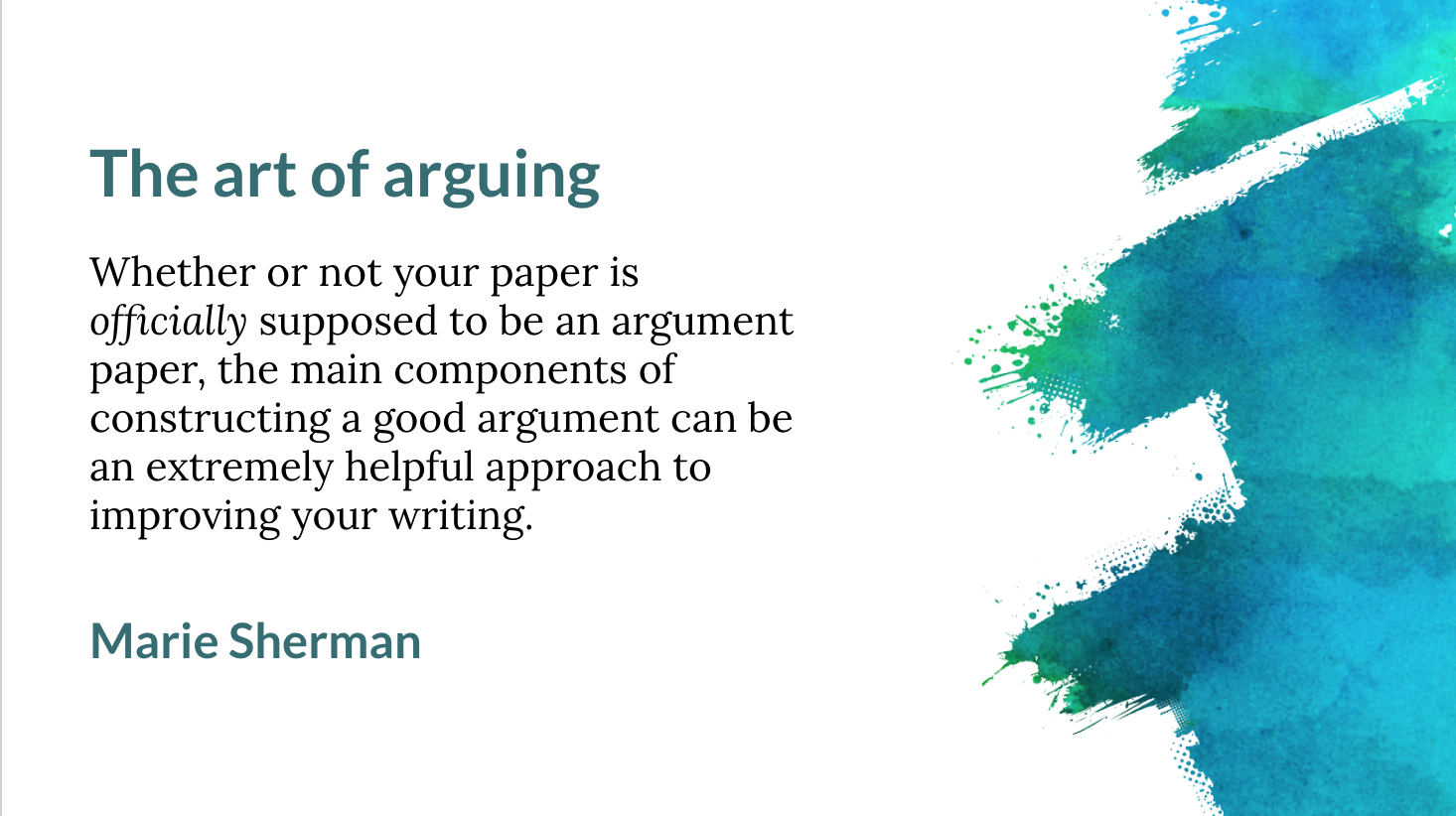As college students, we write tons of papers throughout the semester in multiple disciplines about a vast range of subjects. However, no matter the class or the topic of your paper, there are some ways to make your written assignments much stronger by mastering one particular skill: writing an argument.
Whether or not your paper is officially supposed to be an argument paper, the main components of constructing a good argument can be an extremely helpful approach to improving your writing. The objective of argument writing is to be clear on what you’re writing about and taking a stance.
So, let’s dive in further to what makes up an effective argument and how you can apply these strategies to whatever kind of writing you’re doing.
The first step is to give context to whatever you’re writing about. How much context you give can depend on how long your paper is expected to be. It can be a sentence or two, a couple paragraphs, or anything in between. Regardless, it helps to give some history or background about what you’re going to be writing about so the reader gets a sense of the topic as a whole before you dive into your perspective.
The second step is to state your position. This usually takes the form of a thesis (a sentence or two where you clearly state the direction you are going to take on the topic), creating an overall road map for your reader. If you have provided effective context, this statement will logically fit in as the next part of your paper.
The third and final step is providing claims to back up your argument. Essentially, these are the specific points that led you to your thesis and give the reasoning as to why you are taking the specific stance.
An important part of these claims is to provide actual evidence that backs them up. This evidence can be anything from facts, statistics, expert opinions, or examples. Regardless of the type, make sure you cite the source where you got this evidence so it’s not confused with your thoughts. Be sure to explain how the evidence ties back in with your claims so it’s clear to the reader why you’ve included it.
An optional aspect you can bring to your argument is stating the opposing arguments (Lydia’s blog post specifically addressed counterarguments and can be a useful tool). It’s your discretion whether stating these differing sides will be a strong asset to your own opinion or not.
That’s all it takes! If you keep each of these steps in mind: context, thesis, claims, evidence, and counterarguments, you’ll whip up some amazing argument papers in no time!
Marie Sherman is a junior at Principia College studying education and global studies. She loves running, dancing, painting and orangutans.


One thought on “The art of arguing”
I love how you lay out how simple making a good argument can be. Also, thanks for the shoutout!
Comments are closed.